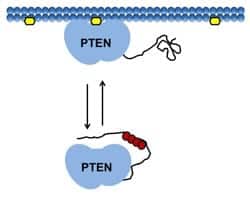mutation
Scientists find what type of genes affect longevity
Tracing all the genetic changes that flow from a single mutation, UCSF scientists have identified the kinds of genes and systems in the body that ultimately allow a doubling of lifespan in the roundworm, C. elegans. Humans share many of these genes, and the researchers think the new findings offer clues to increasing human youthfulness and longevity as well.
Scientists Find Human Longevity Marker
In a study of nonrelated people who have lived for a century or more, the researchers found that the centenarians had something in common: each was five times more likely than the general population to have the same mutation in their mitochondrial DNA (mtDNA). That mutation, the researchers suggest, may provide a survival advantage by speeding mtDNA replication, thereby increasing its amount or replacing that portion of mtDNA which has been battered by the ravages of aging.
Baby got back
 Scientists have pinpointed a mutation that gives sheep big butts — big, hard, glorious butts. A callipyge sheep has a bottom made of muscle, not fat, due to a changed DNA letter. The Duke University geneticist who discovered the mutation, Randy Jirtle, said that some humans might share the trait: “They’d have relatively large rear ends, and absolutely no fat — like sprinters.” Just like Solid Gold, the first sheep with the trait, born two decades ago. His descendants are called “callipyge” from the Greek for “beautiful buttocks.” In another story about mutating bottoms, scientists at Cornell have discovered that disabling a gene can turn a tomato from round to pear-shaped. Without the gene, appropriately named OVATE, a fruit will grow more at the top, leading to a long neck and bulbous base. The missing gene is likely to be the reason that squash, eggplants, and, well, pears are shaped as they are. Most wild fruit are round, and it is suggested that humans bred elongated fruit for aesthetic reasons. You betcha.
Scientists have pinpointed a mutation that gives sheep big butts — big, hard, glorious butts. A callipyge sheep has a bottom made of muscle, not fat, due to a changed DNA letter. The Duke University geneticist who discovered the mutation, Randy Jirtle, said that some humans might share the trait: “They’d have relatively large rear ends, and absolutely no fat — like sprinters.” Just like Solid Gold, the first sheep with the trait, born two decades ago. His descendants are called “callipyge” from the Greek for “beautiful buttocks.” In another story about mutating bottoms, scientists at Cornell have discovered that disabling a gene can turn a tomato from round to pear-shaped. Without the gene, appropriately named OVATE, a fruit will grow more at the top, leading to a long neck and bulbous base. The missing gene is likely to be the reason that squash, eggplants, and, well, pears are shaped as they are. Most wild fruit are round, and it is suggested that humans bred elongated fruit for aesthetic reasons. You betcha.



